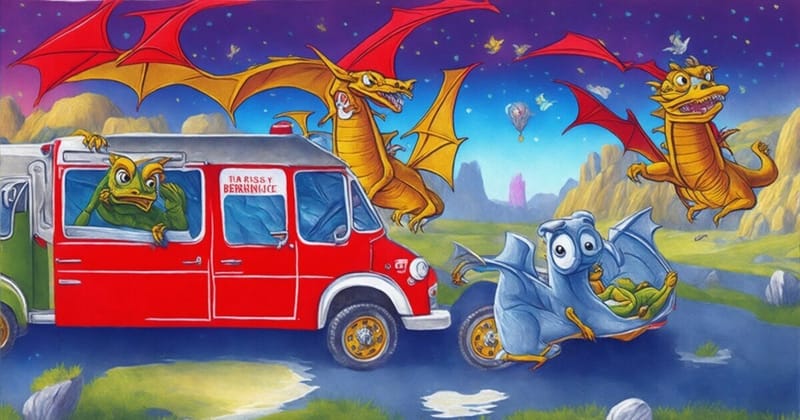This is an edited version of The Procrastilearning Newsletter sent out earlier in 2023. Sign up for future editions here.
This week I wanted to talk about JMW Turner (1775–1851), one of Britain's most important painters. Not because his art was good or anything, but simply because he was a machine when it came to work.
Turner: Harbinger of the modern obsession for efficiency
JMW Turner created an enormous body of work while also breaking the rules of how watercolours and oil painting worked. And I don't use the word "enormous" here lightly.
He created more than:
- 550 oil paintings
- 2,000 watercolours
- and 30,000 works on paper
That's at least 32,550 artworks.
Turner died a spry 76, which means he only lived around 27,740 days.
On average, across his life, he created 1.2 artworks per day 🤯
How did he make so much stuff?
Michael Caine famously described his acting career as:
"If you throw enough shit at the wall, some of it will stick."
But Turner wasn't just throwing random effluvia.
If you've ever looked at his paintings, you can see how powerful his light effects are. A lot of it is to do with how subtle the change in tones is.
Just look at this piece Sunrise with Sea Monsters from 1845:

You can see hundreds of different shades here, each almost imperceptibly different.
What about this one of Tom Tower in Oxford? It seems every brick is a different colour:

For most people, this all would have been a huge pain in the arse.
Those 1.2 artworks per day would be impossible. They would look at their palette and weep.
But Turner didn't use a regular palette. Instead, he'd mix a large amount of a single tone by itself on a dining plate and then use it on multiple paintings at once.
He always had several canvases in his studio at any one time and work on them simultaneously. Moving from one canvas to another, he worked on each for a short period of time before switching to the next, applying layers of a single colour in what looked like loose random ways. Once he had a bit of that one colour on every canvas, he'd mix a slightly different tone and would go back to the front of the line and start the process again.
Essentially, Turner was a bit like one of those chess masters who enjoy playing 15 people at once.
It was this technique that allowed him to produce so much work while retaining an intricate level of detail.
Linking Turner to 3 modern productivity trends
Being a nerd, when I learned about Turner's production technique, I was immediately reminded of three productivity trends that came much later.
1. The assembly line
Obviously, the first similarity that comes to mind is Henry Ford's assembly line from around 100 years later.

The Ford assembly line in 1913, via Wikimedia Commons
Ford pretty much invented our modern concept of the factory. Each worker on his assembly lines making the first mass-produced cars did a different single job multiple times. They hated it, apparently.
But Ford's production methods were designed to create identical cars every time. What Turner doing was creating many completely original pieces of work at once, and by himself, so it made me think of a more recent parallel.
2. Slow burns
Popularised by Tiago Forte, 'slow burns' involve working on multiple projects at once but only a little bit at a time and without any haste. Here's a link to him explaining it.
It's based loosely on physicist Richard Feynman's so-called "12 Favourite Problems":
“You have to keep a dozen of your favorite problems constantly present in your mind, although by and large they will lay in a dormant state. Every time you hear or read a new trick or a new result, test it against each of your twelve problems to see whether it helps. Every once in a while there will be a hit, and people will say: ‘How did he do it? He must be a genius!'”
Slow burns make sense in the context of, for example, article writing. A writer might have 30 different ideas for articles, but the details for the contents often come in drips and drabs as they work on other things.
This is something I've often done in editorial teams. We come up with an article concept and then just let it sit in our management system where people can add relevant ideas to its card whenever they might come to mind. Slowly, the skeleton for an article gets built until finally a writer can put a bit of flesh on it and ready it for publication.
But again, this isn't quite the same as Turner's chessmaster studio either. What his work really reminds me of is simply batching tasks.
3. Batching tasks
Batching is when you take multiple instances of a repetitive task and do it all at once. I think Turner may well have been the first person to have applied it to art.
The classic modern example is email.
Email comes in intermittently during the day and can really derail what you're doing. If you don't want to lose your mind, it's highly recommended that instead of opening your email app every 10 minutes like you do now (just admit it), you set a couple times a day where you login and batch together all your emails at once and blitz through them, say midday till 1pm and then 4:30pm until 5pm. That way you can concentrate on less infuriating tasks.
Another modern example is meal prep.
This involves cooking large amounts of food one day a week and then storing it in the fridge and freezer so that you can eat it all week. Again, keeping the same task to one concentrated time theoretically helps you stay focused and more productive the rest of the time since you've eliminated that chore from your daily schedule.
And it's great if you like the monotony of eating the same thing every day

But to sum up, I guess my real point here is that Turner was cool.
Outside of art, he often walked 20 miles a day, and once hid on a boat so that he couldn't be counted in a national census.
Grumpy loners are the best.


